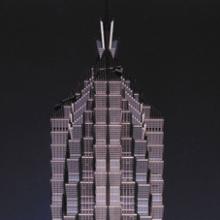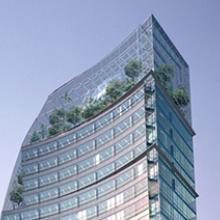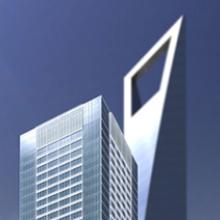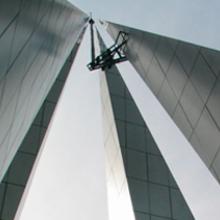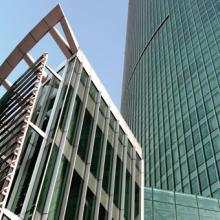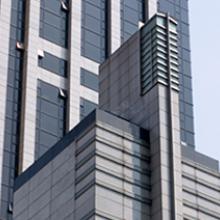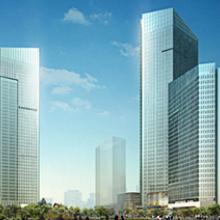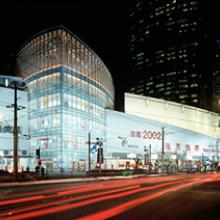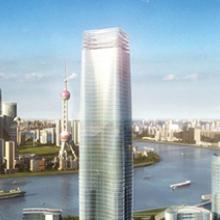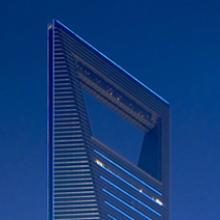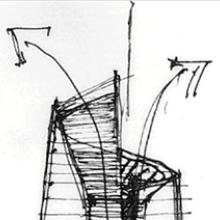Clone of Shanghai: High-Rise Architecture and the Remaking of China's Gateway to the World
"Men of experience and foresight have predicted that in another fifty years Shanghai may become the greatest city of the world. This is not the fantastic dream of an untraveled mind. The future holds something great for Shanghai, and that greatness will outstrip all its past achievements, marvelous as they have been."
— Ching-Lin Hsia, The Status of Shanghai, 1929
Shanghai: High-Rise Architecture and the Remaking of China's Gateway to the World
Shanghai, home to nearly twenty million residents, is China's largest city and its historic gateway to the world. As China emerges as a global economic power in the twenty-first century, Beijing is investing and attracting enormous capital to help Shanghai compete with Hong Kong and Singapore as one of Asia's most important economic hubs. Shanghai is casting off nearly four decades of official indifference and reclaiming its role as the country's most modern, cosmopolitan city. Nowhere is its social, cultural, and economic revival more apparent than in the city's rapidly changing skyline.
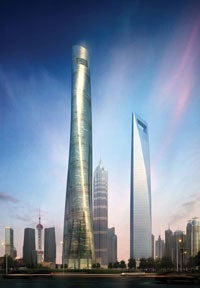 The city's status as one of the world's fastest developing metropolises is reflected in thousands of skyscrapers erected during the past two decades on both sides of the Huangpu River, once Shanghai's natural eastern barrier. In Puxi ("West of the Huangpu"), massive towers of glass and steel now serve as a backdrop to the Bund, the city's renowned esplanade with neoclassical buildings used by British, French, and American banks and trading houses for nearly a century following its forced opening to the West in 1842. The juxtaposition of old and new architecture is particularly dizzying with an array of daring and imaginative designs competing for attention throughout the city, including the spherical Oriental Pearl Tower (1991–95), arguably Shanghai's most famous landmark.
The city's status as one of the world's fastest developing metropolises is reflected in thousands of skyscrapers erected during the past two decades on both sides of the Huangpu River, once Shanghai's natural eastern barrier. In Puxi ("West of the Huangpu"), massive towers of glass and steel now serve as a backdrop to the Bund, the city's renowned esplanade with neoclassical buildings used by British, French, and American banks and trading houses for nearly a century following its forced opening to the West in 1842. The juxtaposition of old and new architecture is particularly dizzying with an array of daring and imaginative designs competing for attention throughout the city, including the spherical Oriental Pearl Tower (1991–95), arguably Shanghai's most famous landmark.
Shanghai's physical transformation began in 1990 when the Pudong area ("East of the Huangpu") was designated as one of China's Special Economic Zones with tax incentives and exemptions to entice direct foreign investment. Plans for improved infrastructure and new high-rise development accelerated after China's paramount leader Deng Xiaoping visited in 1992 and encouraged city leaders to hasten their reforms to become "the head of the dragon" in leading the nation into the future. By the late 1990s, more than half of the world's super-cranes were at work in Shanghai executing the most ambitious development project in modern history.
Consistent with Shanghai's tradition as a place of intersection for Eastern and Western ideas, international design competitions have resulted in global architecture firms working with local architects on projects to make the city more livable—a new deep-water port, railway station, bridges, tunnels, and an extensive network of elevated expressways to serve one of the densest urban areas in the world. A sophisticated and efficient subway system now connects Puxi with Pudong, home to Shanghai's new financial district.
The visual centerpiece of Shanghai's urban master plan is a harmonious trio of super high-rise buildings intended to unify Shanghai's skyline and represent China's past, present, and future: the tiered, the pagoda-like Jin Mao Tower (1994–99); the tapered Shanghai World Financial Center with its distinctive, trapezoidal aperture (1997–2008); and the soaring, asymmetrical Shanghai Tower (2008–14), which, when completed, will be China's tallest building and a model for a new generation of sustainably designed towers. As China re-engages the world and returns Shanghai to its traditional role of prominence, officials in both Beijing and Shanghai hope that the city's distinctive high-rise architecture, unequalled in scale and employing the latest green materials and technologies, becomes a symbol for meeting the challenges of an increasingly urban world.
[image]
Shanghai Tower 2008–14
Lujiazui Financial District, Pudong, Shanghai, China
Gensler
Primary offices involved: San Francisco and Shanghai
Height at top of crown: 2,073 feet/632 meters
Height at top of roof: 1,903 feet/580 meters
Stories: 121
Area: 6,179,324 square feet/574,058 square meters
Facility: office, luxury hotel, entertainment, retail and cultural venues, observation
©2010 by San Francisco Airport Commission. All rights reserved

